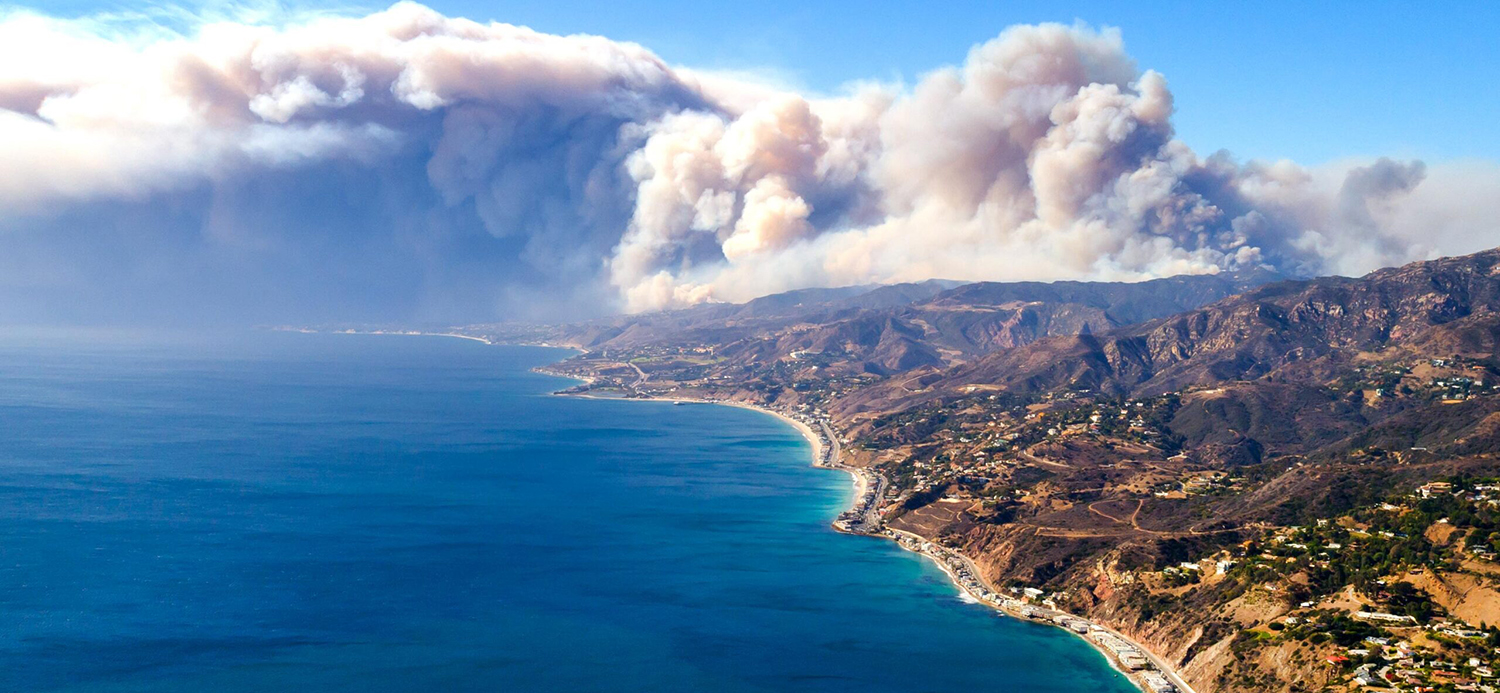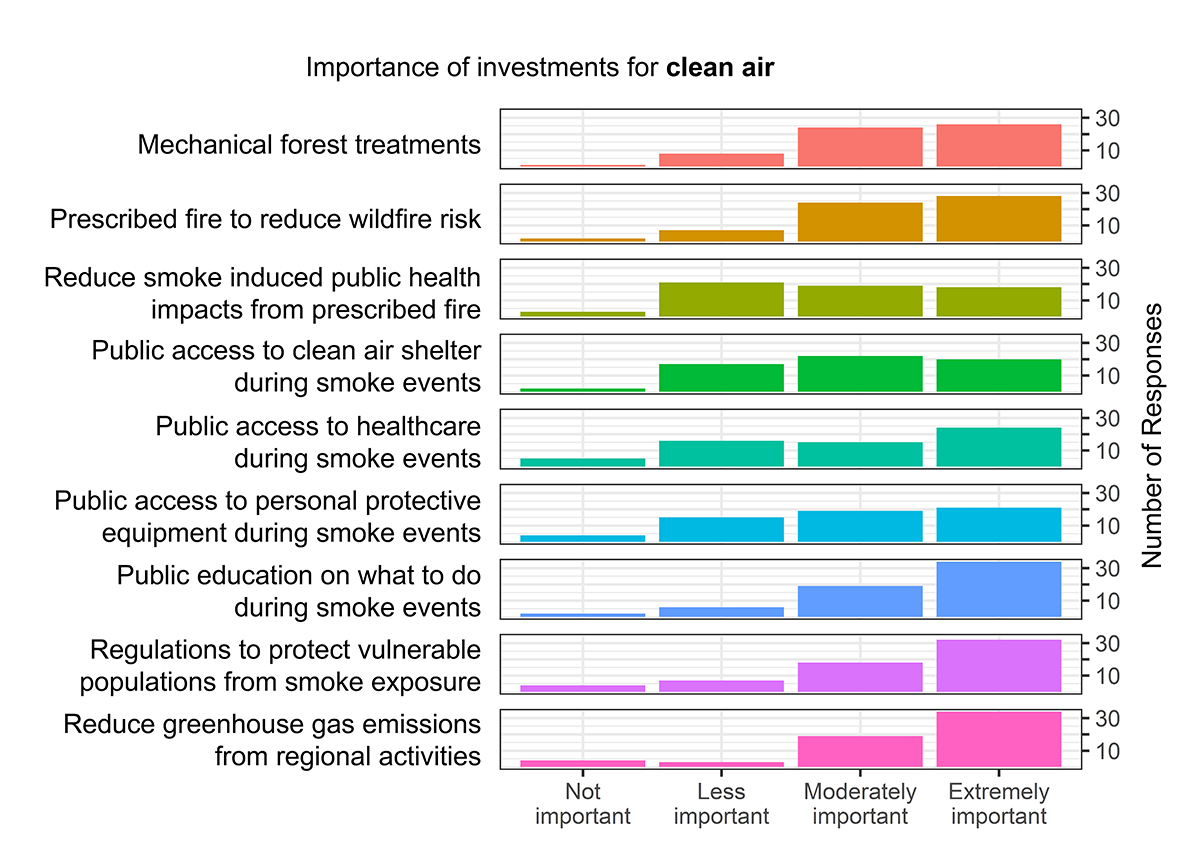Southern California Regional Profile
Air Quality

Overview
The Southern California region has some of the highest air pollution concentrations in the United States, and large wildfires are further aggravating baseline air quality issues. Hazardous air pollutants in wildfire smoke can exacerbate a range of respiratory and cardiovascular issues and even cause premature death.
Smoke from wildfires can affect air quality thousands of miles away from the fire. In Southern California, Santa Ana winds can carry pollutants from fires burning inland to densely populated coastal areas. Population centers, such as Los Angeles, that already have poor air quality from vehicles and industrial activities can be especially vulnerable to temporary increases in fine particulate matter (PM2.5) and ozone levels. Significantly more respiratory-related hospitalizations occur during wildfire events and the highest increases occur in areas downwind of fire. The 2007 wildfires in Southern California are estimated to have caused over $3.4 million in healthcare costs in five counties alone.
Research examining hospitalizations in Southern California found that PM2.5 from wildfire may be up to 10 times more harmful to human health than equal doses of PM2.5 from other emission sources, possibly due to the temperature at which combustion occurs and the material that burns. Generally, fires that burn at lower intensity over smaller areas emit much less harmful pollutants than large, high-severity wildfires. Because of this, low-intensity prescribed fire is applied in some forested areas to reduce the risk of the higher air emissions that might result from an uncontrolled, potentially structure-damaging wildfire.
Certain populations may be especially at-risk to public health impacts of wildfires, including the elderly, children, outdoor workers, fire fighters, people with asthma or other pre-existing respiratory or cardiac conditions, as well as people who have limited access to health care services or who lack the socioeconomic resources to prepare and adapt to emergencies (e.g., by filtering air pollutants in their home or accessing a clean air shelter). People that live in homes without air conditioning and/or proper sealing from outdoor air, or who live in areas that already experience poor air quality, such as near freeways or industrial facilities, are also particularly vulnerable.
Initiatives to alleviate public health impacts include: increasing public education on how to stay safe during hazardous air conditions, providing early notification of smoke events so that residents can prepare, and increasing access to public clean air spaces and personal protective equipment.
Stakeholder Perspectives

Most investments for improving air quality received a mean rating of ‘moderately important.’ Top priorities were public education on what to do during smoke events and reducing greenhouse gas emissions from regional activities. These were closely followed by regulations to protect vulnerable populations from smoke exposure, and fuel treatments that reduce the probability or scale of wildfire, whether mechanical or prescribed burning. Reducing public health impacts from prescribed fire was perceived to be slightly lower priority, based on mean response.
During interviews, smoke hazard exposure was occasionally identified as a key issue and significant concern in the region, especially for people who work outside or are unable to protect themselves from air pollution. Another interviewee discussed how prescribed burning initiatives in their area were limited by Air Quality Management District (AQMD) restrictions. The interviewee noted that in recent years there were fewer days when it was permissible to burn because particulate matter concentrations, which were already high in nearby urban areas, increased with higher temperature. The interviewee observed a mismatch between where the AQMD evaluation was typically conducted in urban areas and where the prescribed burning activities were planned in more rural areas, and the interviewee recommended that AQMD evaluation to allow burning should be more localized and based on air quality conditions in the area that would be affected by the planned burning.
